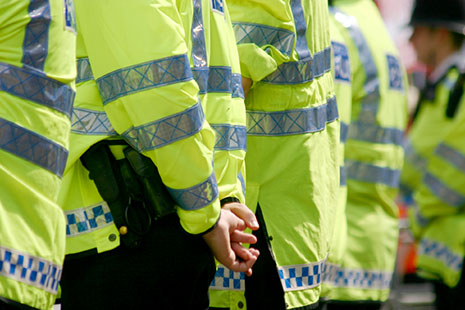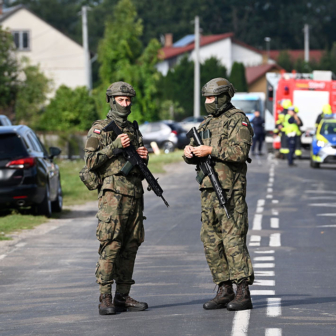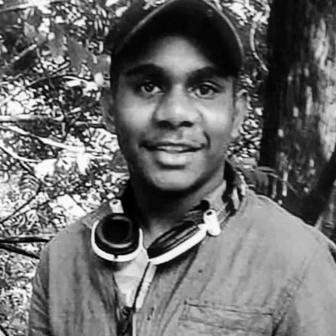IT’S BEEN A BAD TIME in Britain lately for police, but a worse one if you’re a demonstrator, or even a London newspaper vendor on your way home after a day’s work. The stories about the life – and, during the April G20 summit, the death – of forty-seven year old Ian Tomlinson began almost from the moment he hit the pavement, the victim of a brutal attack from behind by a policeman who has since been suspended from duty.
Police are said to have told demonstrators at the site that “it would take a brave coroner to suggest the cause of death was because of any wrongdoing by the police.” Initially, this prediction proved correct. No one could accuse the authorities of delaying tactics; certainly not on the basis of the speed with which they lined up a coroner to do his stuff. He very quickly found that Tomlinson had died of a heart attack. On 11 April, however, the Guardian reported that the forensic pathologist concerned, Dr Freddy Patel, had previously been reprimanded by the General Medical Council after he claimed publicly that a black man who died in police custody was a crack cocaine user. In another case, police dropped a criminal investigation after Patel reported that a woman thought to be the victim in a suspicious death case had actually died of heart disease. A man living in the flat where her body was discovered went on to murder and mutilate two other women. (A later post-mortem found that Ian Tomlinson had died not of a heart attack, but of internal bleeding.)
The police were also remarkably efficient in ensuring that the public heard the “truth” about Tomlinson’s death as quickly as possible. Tomlinson died just after 7.30 pm on 1 April. Just four hours later, the Met issued a statement saying they had learned that a member of the public had collapsed; that police medics had examined him and called for an ambulance crew; and that they were hindered in their efforts by protesters throwing bottles at them. The next day, police told journalists that Tomlinson had not had any contact with police before his death and died of natural causes.
There have been suggestions that police reports about Tomlinson were “misleading.” The less kindly disposed accused them of “spin.” The Concise Oxford English Dictionary defines “spin” as “the presentation of information in a particular way, especially a favourable one.” It defines “lying” as “not telling the truth.” I reckon it’s a lie, not spin, to suggest that police helped and protesters hindered, when there’s a mixture of footage and eyewitness testimony that reveals the opposite. Every tale police told just happened to paint protesters in the worst light possible, and the constabulary as honest guardians of law, order and civic virtue. All of it was designed to be lapped up by the tabloids, who initially gave every sign of being willing to lap it up; for they hate protestors and, if they do not love police, do love “law and order” so long as it does not extend inconveniently to those who own and run newspapers.
It was fitting that, amid the gathering controversy about how police handled G20 and whether they had killed Tomlinson, Britain remembered the twentieth anniversary of the Hillsborough soccer disaster. They were reminded how police incompetence that day resulted in the deaths of ninety-six people. And they were reminded of how police then told a “disgraceful lie,” as a 1998 enquiry found, in order to lay the blame for the disaster on supporters whom they accused of forcing an entry gate open, instead of where it truly belonged: at the feet of police who opened the gate themselves. And they were reminded that back in 1989 the Sun lapped up these disgraceful lies and added some its own, such as the allegation that football fans had looted and urinated on the dead victims’ bodies.
The story that police told about the death of Ian Tomlinson would probably have prevailed if G20 had happened a few years back. The tales told by police have usually proven hard nuts to crack; much harder, for instance, than the heads of protesters such as Blair Peach, a New Zealand-born schoolteacher killed by a blow to the skull at an anti-Nazi rally in London in 1979. Crow-bars, sledgehammers and other unauthorised weapons were later discovered in the lockers of police present that day. No one has ever been charged. Indeed, the number of police sent to prison in such circumstances can be counted on the fingers of no hands.
But the most extraordinary feature of the G20 controversy was that in an age of surveillance, and in a city where every nose-pick and bottom-scratch will be duly recorded on CCTV, the public hit back. Everyone seems to have a camera on hand these days in one form or another – I’ve even finally learned to use the one on my mobile – and it was a delicious irony that a recording of the attack on Tomlinson by a visiting investment fund manager from New York set the ball rolling. Soon, there was a vast amount of amateur footage doing the rounds on YouTube, not only concerning the Tomlinson incident, but also showing other violence perpetrated by police. In retrospect, it seems remarkable that those police who bashed protesters, and those other police who simply watched them do so as if it were the most natural thing in the world, could have been so naïve. It’s also disturbing that without the media and the public, a body such as the Independent Police Complaints Commission would still be thrashing around in the dark. It had the temerity, early in the controversy, to criticise the Guardian for upsetting Tomlinson’s family by claiming that he had been assaulted by police.
Largely as a result of the film footage, new stories about Ian Tomlinson were told. According to one narrative, he was on his way home from work to watch the football when he inadvertently became the victim of police “kettling,” the process of containing protesters in a designated area as a means of crowd control. It was a story designed to appeal to the respectable types who tend to think of police as their guardians and who read the Evening Standard in the train on their way home to their comfortable suburban villas. Anyone, it hinted, could become the victim in circumstances where police became the masters rather than the servants of the public. But complexities soon emerged. Tomlinson, as the Daily Mail so delicately put it, was a “homeless alcoholic” estranged from his family and living in a homeless shelter. A sad and tragic story seemed even sadder. It made me think, in the Australian context, of Cornelia Rau and Vivian Alvarez Solon, also victims of state brutality and irresponsible, incompetent and unaccountable public officials. Yes, the “respectable citizen” does need to worry when state officials decide that they have been given the go-ahead to stomp on heads, but those who are most likely to suffer are the poor, the ill and the powerless.
Recently, the Met chief, Sir Paul Stephenson, praised the overwhelming majority of police for their professional handling of the G20 protests, while admitting that some of the footage he’d seen suggested that there had been inappropriate behaviour by a few. By this, he would presumably have meant police taking off their name-tags to prevent identification; smashing a protester’s head with a shield; hitting a woman across the face; breaking the arm of a journalist; and attacking protesters with batons and police dogs. But one should not be too hard on the Met chief. This kind of spin – I’ll use the polite term for it – this blaming a few bad apples for brutal and almost certainly unlawful behaviour, worked admirably for the Americans over Abu Ghraib in Iraq. It’s especially effective in finding a few people to blame and to punish – usually people not too much further up the pecking order than the victims of the said brutality. Leadership failures naturally go unpunished.
Amazingly, the G20 fiasco was only one among several chapters in the pathetic story of British policing in this cruellest of Aprils. At the same time as the Tomlinson revelations were breaking, a policeman was convicted for having run over and killed a Newcastle teenager one night last May. He was driving almost sixty miles an hour over the speed limit, without warning lights or siren. Meanwhile, police were forced to drop the case against Tory MP Damian Green, whom they had arrested and vindictively threatened with life imprisonment after he was the recipient of a leak from the civil service.
Then there was the latest local fiasco in the war on terror. A planned raid on a supposed terrorist cell had to be brought forward after Assistant Commissioner Bob Quick – or “PC Clod” as the Daily Mirror called him – was photographed carrying exposed documents in which the plans for the raid were clearly visible. The case quickly collapsed, but the Pakistanis arrested are being deported anyway, in a manoeuvre which will also be familiar enough to Australians. This farce at least had the virtue of deflecting attention from the G20 affair. So did the arrest of 114 people at a school in Nottingham. The charge: conspiracy to commit aggravated trespass on a power station. The right to protest in this country hangs by the flimsiest of threads. So, apparently, does the right to photograph a London bus, as an Austrian tourist found out to his cost. He was forced by police to delete any photographs on his camera that related to public transport – on impeccable anti-terrorist grounds, of course.
It would be easy to laugh at the crass stupidity, authoritarianism and vindictiveness of police in these incidents if they did not so obviously conform to a larger pattern. All the same, after the G20 summit, you can certainly understand police wanting to take people’s cameras away. It is, in fact, already illegal in this country to photograph police. And if this absurd law had been enforced during G20, Ian Tomlinson’s family would still be labouring under the impression that he had died of a heart attack and that kindly police did all they could in difficult circumstances to help him. •




